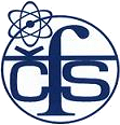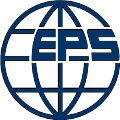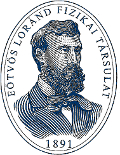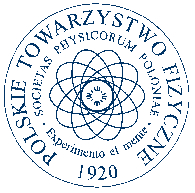Invited speakers
Szabolcs Csonka (Budapest University of Technology and Economics)
Quantumelectronics, an emerging field at the nanoscale

Szabolcs Csonka is an assistant professor at the Budapest University of Technology and Economics, a member of the solid state physics laboratory. His main research interests is nanophysics, particularly quantum effects in nanostructures, hybrid nanostructures, semiconductor nanowires, the spin transport, quantum dots, superconducting correlations, atomic and molecular junctions, transport through single metal atoms, simple molecules, point contact spectroscopy and Andreev spectroscopy.
John M. Dudley, President of the European Physical Society
(University of Franche-Comté, Besançon, France)
Nonlinear optics
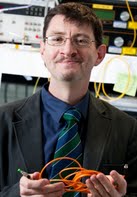
Originally from South Auckland in New Zealand, John Dudley received B.Sc and Ph.D. degrees from the University of Auckland in 1987 and 1992 respectively. In 1992 and 1993, he carried out postdoctoral research at the University of St Andrews in Scotland before taking a lecturing position in 1994 at the University of Auckland. In 2000, he was appointed Professor at the University of Franche-Comte in Besancon, France, where he heads the Optoelectronics and Photonics research group that currently consists of around 12 permanent staff & 20 contractual staff and/or graduate students. His research interests cover broad themes in nonlinear and ultrafast optics, and he is currently co-laureate of an European Research Council Advanced Grant with Professor Frederic Dias of UCD Dublin to study the physics of extreme waves in optics and hydrodynamics. He was named a member of the Institut Universitaire de France in 2005 and elected a Fellow of the Optical Society of America in 2007. He was an IEEE LEOS Distinguished Lecturer for the period 2008-2010 and is Past Chair of the Quantum Electronics and Optics Division of the European Physical Society. In 2009, he was awarded the Grand Prix de l'Electronique Général Ferrié from the Société des Electriciens et Electroniciens (SEE) and has also received a research award from the IXCORE Foundation. He is currently a Deputy Editor of the OSA journal Optics Express, and he participates in OSA and SPIE Travelling Lecturer programmes. He was elected as a Fellow of the IEEE in 2011 and a Fellow of the European Optical Society in 2012. In 2012 he was elected Vice President of the European Physical Society, and he is serving as its President from April 2013.
Zsolt Fülöp (Inst. of Nuclear Research of HAS, Debrecen)
Activities in EPS

Zsolt Fülöp is the director of MTA Atomki, Institute for Nuclear Research in Debrecen, Hungary. His main interest is nuclear astrophysics, including underground nuclear physics, the astrophysical p-process and exotic nuclei. He was the chair of the Nuclear Physics Division of the EPS between 2010-11. At present, he is serving at the Executive Committee of the European Physical Society and member of Academia Europea.
Richard Hlubina (Comenius University, Bratislava)
Current problems in physics of high-temperature superconductors

Richard Hlubina is an associate professor at the Dept. of Experimental Physics of the Faculty of Mathematics, Physics and Informatics at Comenius University in Bratislava. His main interests include
condensed matter theory, strongly correlated electron systems and unconventional superconductivity.
Karol Hricovini (Université de Cergy-Pontoise)
Novel Materials for Energy and Spintronics Applications
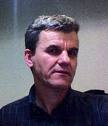
Karol Hricovini is a professor at the University of Cergy-Pontoise, Paris region, and director of the Laboratoire de Physique des Matériaux et des Surfaces. His research activity includes electronic structure and magnetism of solids studied by photoemission and other photon-based spectroscopies using synchrotron radiation.
Sándor Katz (Eötvös Loránd University, Budapest)
The phase diagram of Quantum Chromodynamics
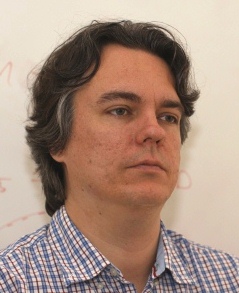
Sándor Katz is a professor at Eötvös University, currently the head of the Institute of Theoretical Physics. He obtained his Ph.D. in 2001 at the Eötvös University. He was a postdoctoral researcher at DESY, Hamburg, and at the University of Wuppertal, Germany. Since 2008 he has been the leader of the Lattice Gauge Theory group at the Eötvös University. His main research interests are various areas of lattice QCD: the determination and properties of the phase diagram at finite chemical potential or external magnetic field, the QCD hadron spectrum, nuclear physics from lattice QCD.
Peter Kopčanský (Inst. of Experimental Physics SAS, Košice)
Feronematics
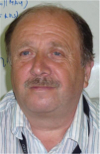
Peter Kopčanský is a eesearch professor at the Institute of Experimental Physics Slovak Academy of Sciences at Košice and a head of Centre of excellence named Nanofluid responsible for implementation of projects of structural funds of European Union into infrastructure and education in field of nanotechnology. He is a member of International steering committe of magnetic fluids since 2004 and received an award of Slovak Academy of Sciences for his work in the field of magnetic drug targeting in 2007. His main interests include the study of magnetoviscosity of magnetic fluids, magnetodielelectric and magnetooptical properties of magnetic fluids, radiation stability of magnetic fluids, study of composite systems of liquid crystals with magnetic fluids (called ferronematics), magnetic drug targeting, interaction of magnetic particles with a myloid structures.
Rupert Leitner (Charles University, Prague)
Discovery of a Higgs boson at CERN

Rupert Leitner is associate professor of particle physics at the Charles University in Prague. He is reading lectures on nuclear and particle physics and experimental foundations of the Standard Model. He supervised several bachelor, diploma and PhD thesis. Currently he is involved in the experiment ATLAS at CERN Large Hadron Collider, he was leading (2001-2005) the project of ATLAS hadron calorimeter TileCal. He is also member of international neutrino experiment Daya Bay. He is author and co-author of many scientific papers; he has served in various committees, in particular High Energy and Particle Physics committee of the EPS (2004-2012) and was part of Organizing Committees of various particle physics conferences and Schools.
Jiří J. Mareš (Inst. of Physics ASCR, Prague)
The concept of temperature – critical analysis
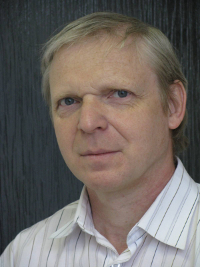
Jiří J. Mareš is a Deputy Director of the Institute of Physics, Academy of Sciences of CR specialized in condensed matter physics. He deals with quantum transport properties of semiconductor-based disordered systems and with fundamental problems of thermal physics and electrostatics.
Jan Soubusta (Palacký University, Olomouc & Inst. of Physics ASCR, Prague)
Experimental quantum information processing with linear optics
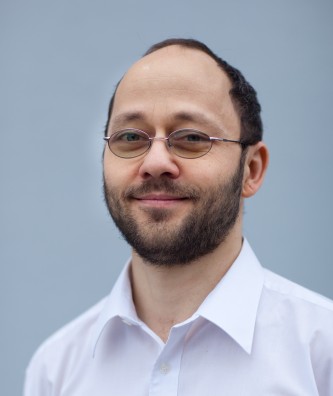
Jan Soubusta is an associated professor of optics and optoelectronics at the Joint Laboratory of Optics at Palacký University in Olomouc since 2010. He graduated in 2000 at the Faculty of Mathematics and Physics, Charles University in Prague, where he was studying optical properties of 2D quantum heterostructures. Recently he is working in the field of nonlinear optics, quantum optics and quantum information processing with light. He is a leader of quantum information processing laboratory at the Joint Laboratory of Optics. His main research interests are quantum cloning experiments, experimental quantum information processing, implementing theoretical proposals, building quantum optics gates and filters and studying new sources of correlated photons based on periodically poled materials.
Józef Spałek (Jagiellonian University, Krakow)
Strongly correlated quantum matter: unusual quasiparticles and real space pairing

Prof. Jozef Spałek is the Head of the Department of Condensed Matter Theory and Nanophysics in the Institute of Physics of the Jagiellonian University, and also professor at the AGH University of Science and Technology, both in Kraków. His postdoctoral work was carried out in England (Imperial College of Science, Technology, and Medicine), in USA (Purdue University), and in France (CNRS, Universite Paris-Sud, and Universite Paris-Nord). He was also a visiting professor at Purdue University, visiting scholar at Harvard University, and professor at Warsaw University (1991-1998). His research interests are concentrated on quantum materials with strongly correlated electrons and in particular, on theory of high temperature ad heavy-fermion superconductivity. He is also interested in nanophysics. In both topics he proposed a new theoretical approach taking into account the strong correlations among the electrons. Recently, he has become interested also in the subject of emergent phenomena in Nature and related philosophical questions. For his work he was awarded the Maria Skłodowska-Curie Prize of the Polish Academy of Sciences and a special fellowship from the Foundation for Polish Science in the years 2003-2007. He is a foreign member of Accademia di Scienze e Lettere based in Milano. In 2005, Professor Spałek received the Polish Order of Merit, the Polonia Restituta Cross from the President of Poland. He was also awarded the Alessandro Volta Silver Medal by Universita di Pavia for his work for the School “European Doctorate in Physics”. In the period 2004-10 he was a member of the Science Council to the Minister of Science and Higher Education.
Radek Zbořil (Palacký University, Olomouc)
Advanced nanoarchitecture of iron and iron oxide based materials for environmental, catalytic and biomedical applications
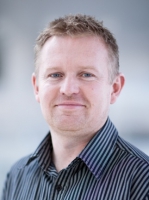
Radek Zbořil is a professor at the Palacky University in Olomouc and the general director for the Regional Centre of Advanced Technologies and Materials in Olomouc. He is also an active member on the board of Technology Agency of the Czech Republic. In 2011, he was awarded by the Czech Republic Minister of Education for extraordinary results achieved in the field of research, experimental development and innovations. Professor Zbořil is author and co-author of more than 200 papers in top international journals including Chemical Reviews, ACS Nano, Journal of the American Chemical Society, Chemistry of Materials, Biomaterials, Small or Advanced Functional Materials etc. His specialization includes nanomaterial research – iron and iron oxide based nanoparticles, silver nanoparticles, carbon nanostructures (graphene derivatives, carbon dots), and magnetic nanoparticles. These materials have multiple applications in catalysis, water treatment, antimicrobial treatment, medicine and biotechnologies.







